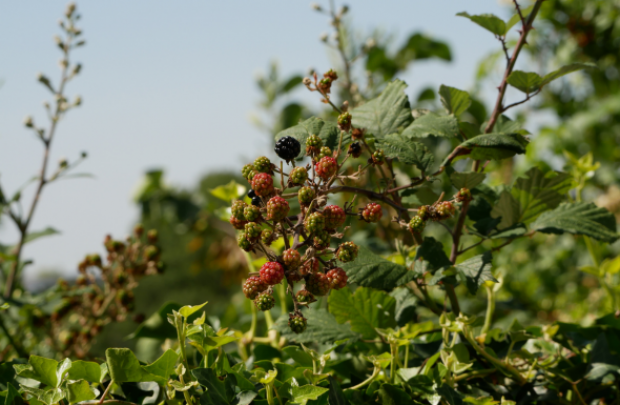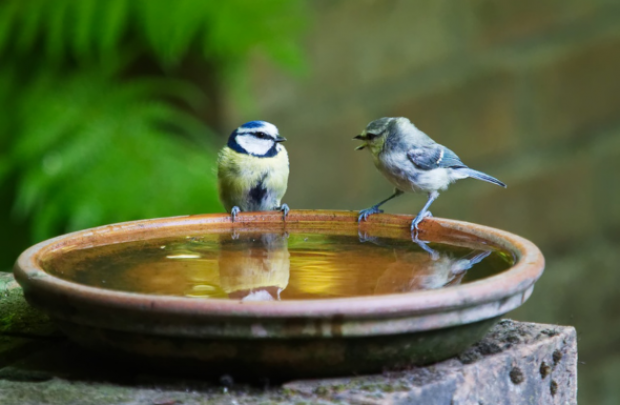Nocturnal wildlife you can see in autumn
By Amber Jepson, Bangor University
Many of us love and appreciate our native wildlife and enjoy the wonderful changes the seasons bring about. Summer's end is nigh and now we can expect to see the wonders of autumn seeping into nature; seen in the leaves as they adopt a series of beautiful red, brown, yellow, and orange colours; where small mammals, reptiles and insects prepare for a lengthy sleep during their hibernation period through winter; where we say goodbye to some bird species as they travel back to the warmth of the south to escape the harsh cold that ensues during northern winters.
For the UK’s wildlife, autumn is a time to reap the bounties of summer and prepare for the onslaught of grim winter weather. As the days grow shorter, nocturnal wildlife begins to enjoy longer and darker nights, from bats and owls flying through the cold night air, to the elusive small carnivores stalking their prey on the forest floor.
Through this blog, we will explore the phenomenon that is nocturnal and crepuscular wildlife, supplying a guide to take you through what wildlife to observe this autumn.
Bats
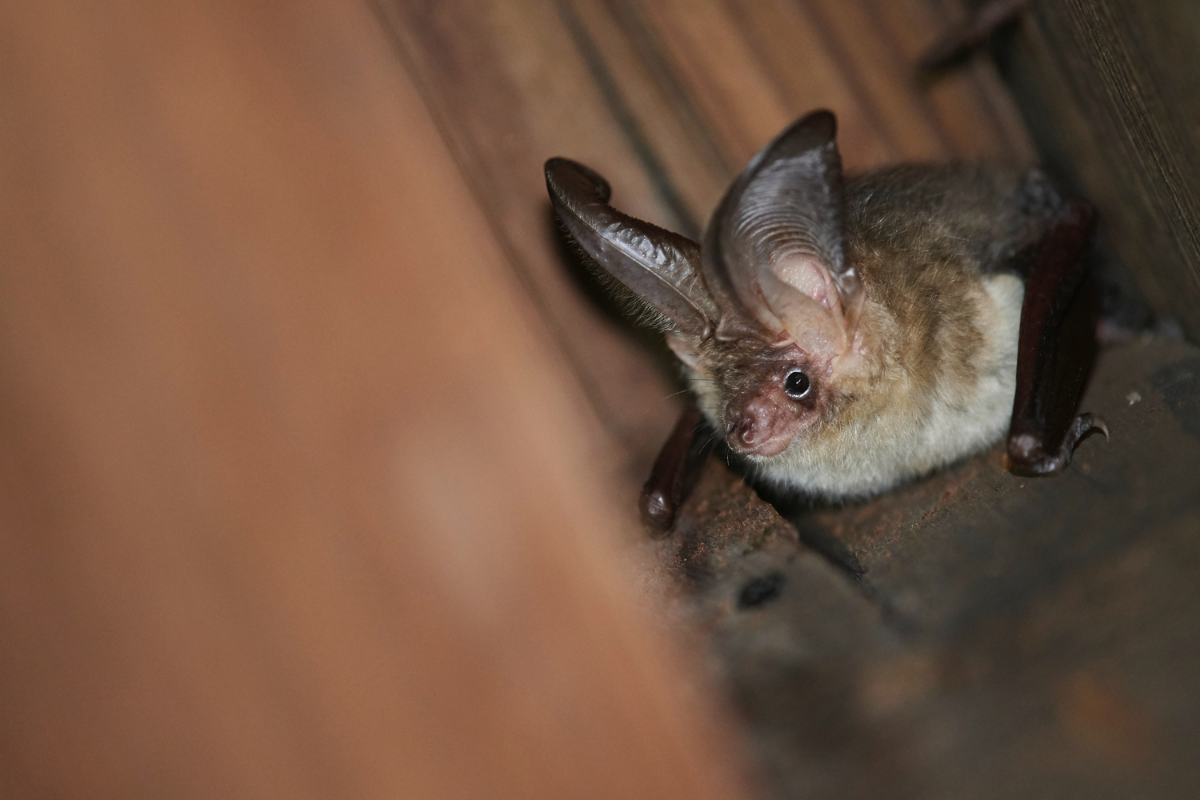
As the nights extend, you can be sure to spot the famous nocturnal mammal most are familiar with - the bat. Here in the UK, we have 18 species of bat which are endemic to the region, with some more common than others.
The common pipistrelle bat (Pipistrellus pipistrellus) for example, is the second most common bat you will see anywhere across the UK, with many being spotted from the comfort of your garden. They can also be spotted fluttering around by water sources, such as lakes, ponds, and rivers.
Most bats can be found within dense woodlands, open farmland, grassland, and even busy urban areas. Bats are quite adaptive with where they live – they can inhabit the usual wild habitats such as crevices in trees and the depths of caves, or they can also feel at home in buildings and rooftops, as well as commonly seen taking up residence in churches, where there is plenty of space in rooftops and overhangs that provide darkness in the daytime.
The barbastelle bat (Barbastella barbastellus) is one of the rarest species of bat in the UK, distinctive in appearance with its pug-like face and large, wide ears. Though exceedingly rare, the barbastelle's distribution is predominantly in southern and central England and Wales.
The significant loss of woodland is a major contributing factor towards their decline in population, as woodlands are a key habitat for such night time foragers – they depend upon the upper canopies of trees, as they provide sufficient darkness in the day, for resting and for beginning their nightly hunt for beetles and moths, when it is not dark enough to venture into the open night.
Bats are interesting mammals, as they have the ability to fly, whilst also possessing the ability to use sonar – echolocation. Bats having bad eyesight is a myth, as they are actually quite well adapted to see and are not completely dependent on echolocation to survive.
Echolocation helps bats to navigate their environment and to locate and catch their prey during night time, whilst using their good eyesight to locate food during the day.
Owls
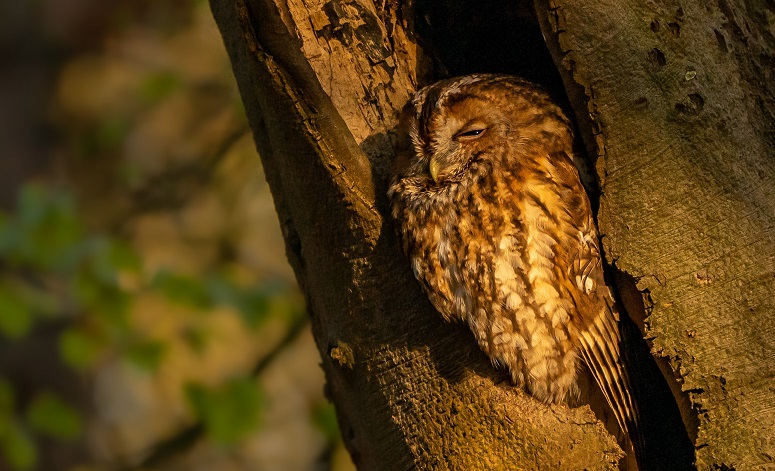
Among the batty creatures of the night, there are the raptors (birds of prey) that rule the skies. Owls use their enhanced perception to hunt their prey swiftly and silently. You will not hear an owl unless they want you to hear them.
Listen out for the tawny owls (Strix aluco) - our largest Strigiformes species - hooting calls throughout the late autumn and winter months, when the mating season for this species begins. You can expect to see the barn owl (Tyto alba) this time of year in the twilight hours, mostly inhabiting farmland, where they glide over the fields in search of their prey.
The UK is also home to the long-eared owl (Asio otus) and short-eared owl (Asio flammeus). No bigger than a wood pigeon in body size, the beautiful long-eared owls are a rarity in the UK, as they are critically endangered. The long-eared owl can be seen during its local migrations during any time of day, or you will have better luck spotting them in winter when they are travelling to and from their roost sites at night.
The short-eared owl, however, is somewhat of an outlier where owl behaviour is concerned, since they are diurnal – active during the day. They can usually be seen inhabiting coastal saltmarshes and woodland through autumn and more frequently seen during winter, which also happens to be their breeding season. Short-eared owls also are strange in their nesting behaviours – they nest on the ground, instead of up high in the trees’ canopy.
Since all UK owls are adapted for night time activity, they all have fantastic eyesight, due to the largeness of their eyes, which will allow them to take advantage of detecting any light that is available. Furthermore, because owls have fixed eye sockets, they must be able to rotate their heads to see all around them, which is provided by their adapted 11 – 25 neck vertebrae, enabling them to see 270° and twist their heads upside down.
Wildcat
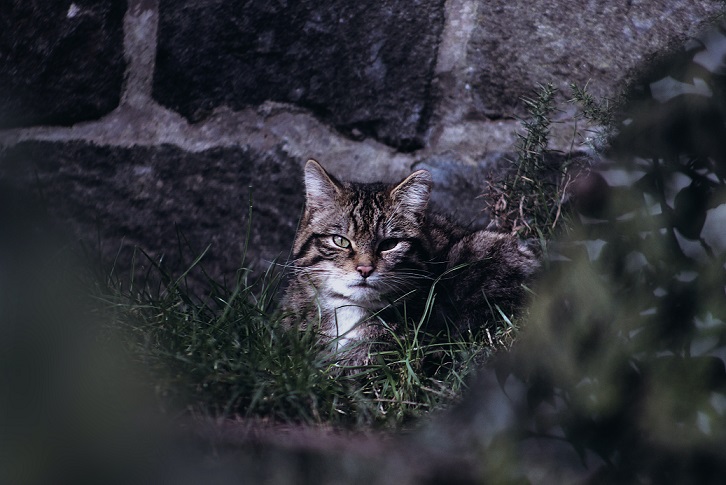
Whilst the owls and bats dictate the skies, the remaining wild UK predators of the night dominate the forest floor, with some also being expert navigators of towns and cities. The truly wild carnivores you might be lucky enough to spot, prowling in the darkness, are the ever-elusive pine marten (Martes martes), or the Scottish wildcat (Felis silvestris).
These small carnivorous mammal species are critically endangered in the UK. Unfortunately, the Scottish wildcat is declining in their native Scottish regions, due to habitat destruction and crossbreeding between domestic cats (hybridisation), causing them to lose their wild heritage. Wildcats have brown mottled fur, with patterns that are similar to, but not identical to, the tabby cat.
They have a thick, blunt tail with a black tip and rings. The wildcat is stockier and more muscular than domestic cats, which allows them to hunt more efficiently in the wild. They have incredibly sensitive hearing, sense of smell and sight, as well as sensitized whiskers that help them to hunt their prey.
These cats are solitary nocturnal hunters, currently only found and distributed throughout the Scottish Highlands. They eat any small mammals, including rabbits, mice, voles, hares and some small bird species. During the autumn season, the Scottish wildcats get ready to defend their territory against rival wildcats, so that they have their grounds and resources established as winter looms ahead.
Male Scottish wildcats tend to leave their mother’s territory before their first winter, though the females stick around their mother's territory over winter, before leaving in the spring. Though the sighting of a wildcat is rare, the best time to spot them is around dusk and dawn when the weather is nicer – they don’t like the rain and snow.
Pine marten
Pine martens are a true rarity in England and Wales, though growing in population in Scotland. Though pine martens are known to be interchangeable in their activity levels throughout night and daytime in the summer, mostly due to raising their cubs, they are predominantly nocturnal animals.
Pine martens, although they look cute and cuddly, are anything but! They are impressive predators, using their agility, sharp teeth and semi-retractable claws (they are the only mustelid species to have these!) to hunt their prey with efficiency. Pine martens are omnivorous and opportunist hunters, with most of their diet consisting of small mammals, such as rabbits, voles, and mice, as well as birds, eggs and insects.
They also like to eat berries – especially during autumn, and other fruits. There is ongoing research into how pine martens predate upon grey squirrels, and how this predator-prey relationship is positively affecting the red squirrel population, due to how the grey squirrel population is depleting.
Fox
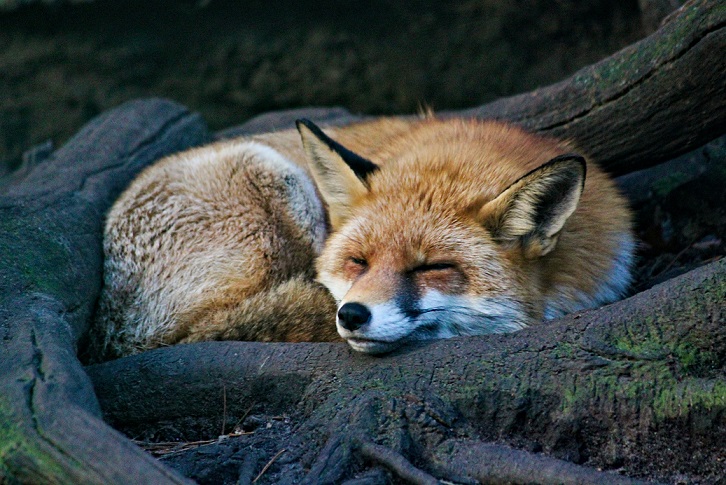
A more familiar nocturnal British predator is the red fox (Vulpes vulpes). Cunning and slick, foxes can be seen from dusk and through the night wandering in search of small rodents, rabbits, and voles, as well as the occasional bird. Foxes even like their share of beetles and earthworms.
Foxes are intricate survivalists, having the adaptability to live in either countryside, woodland, or urban cities. During the late autumn and winter months, you may be able to hear a fox vocalising, as this is the time they usually exercise their call. Foxes are usually silent creatures – though when you hear this call, you may think it’s two animals fighting, as it sounds bloodcurdling, but rest assured the fox is just communicating.
Throughout autumn, it is not necessary to feed foxes, as there are plenty of sources of food, but you can if you wish to, within reason. Feeding foxes too much can cause them to be bolder and less cautious of people, which can be dangerous for them in the long term. Small portions of food are more favourable. You can feed foxes virtually anything because their diet is so varied, though since they are mostly carnivorous, they like cooked and raw meats, as well as tinned pet food, cheese, and table scraps.
Badger
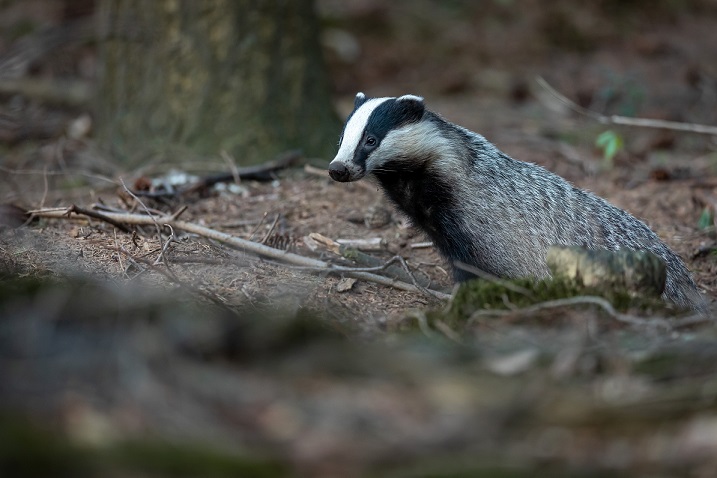
The European badger (Meles meles) is also a nocturnal UK species. The badger usually makes their home in underground burrows they create using their large claws to dig, called setts. These setts can usually be found in broadleaf woodlands or anywhere where there are plenty of earthworms. You can usually find elderberry bushes close to badger setts, as badgers love to browse these bushes, as well as feast on apples, plums, and pears.
You can leave fruit like this out for badgers in your garden if you have recently spotted any, as well as leave out some dried fruit and grapes, though take care to feed them small amounts of food irregularly, and more so in times of great need – late autumn/winter and spring - so they don’t become dependent on you for food.
They also like to eat nuts and acorns, as well as eat crops such as wheat and sweetcorn. Their main source of food that makes up 80% of their diet is earthworms, though they take interest in other insects as well, including snails, slugs, beetles etc. Badgers are opportunist foragers and hunters, so they will take advantage of anything they find, including predating on hedgehogs.
The badger is the only natural predator that can kill and feed on hedgehogs. Badgers also eat mice, rats, frogs, toads and rabbits. Badgers are very social creatures, and live within family groups, called clans. Usually, there are six badgers in each family clan that shares a territory. To reinforce their territory boundaries, badgers have a series of latrines stationed around their territory to help ward off conflict with other badgers.
Hedgehog
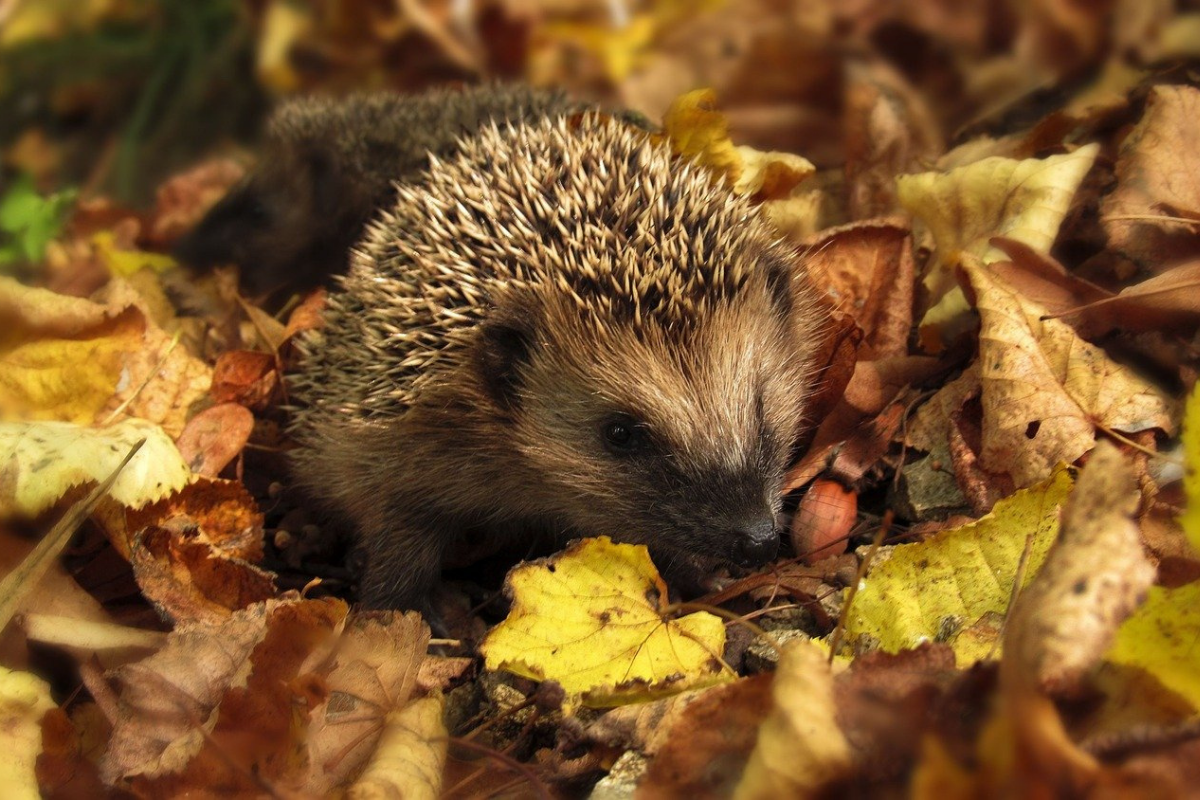
And surely, every Brit is familiar with the haughty hedgehog (Erinaceus europaeus), one of the most renowned nocturnal mammals in all the UK. These spiny little hogs are night time foragers, always after their next creepy crawly snack, or best pick of juicy fruit and veg.
Hedgehogs must forage and eat as much food as they can during autumn, so they are prepared for hibernation during the harsh winter months. Hibernation is when colder weather and temperatures cause an animal to go into a state of inactivity, by slowing their heart rate and breathing, as well as lowering their body temperature and metabolism. Because of this, hedgehogs can eat less during their state of inactivity.
Though, their bodies function in a clever way as to wake the hedgehog up if they are in danger of freezing from very cold temperatures. After eating their fill, and building up their body fat reserves, the hedgehogs find any cosy hiding places they can and settle down to hibernate, making use of whatever resources are available, creating their own shelters, known as a hibernaculum, from materials such as dead leaves, twigs and sticks, feathers, and moss.
In their urban habitat, they usually take up residence in piles of logs, underneath garden sheds and porches, and in compost heaps. Depending on the temperature, hedgehogs usually go into hibernation around October/November time, though if conditions are favourable enough – temperatures are warm enough – you might still see hedgehogs trudging about in December.
To help hedgehogs find a safe refuge for the winter, try and keep a section of your garden untidy, so the hedgehogs have long grass to hide in, leave stacks of logs of twigs somewhere within your garden, provide small wooden hedgehog boxes for them, as well as accessible food. Fences usually stop hedgehogs from moving around through gardens easily, so a small effort to make a hole big enough for hedgehogs to fit through would make all the difference towards their survival.
All these efforts will help towards protecting the UK’s hedgehog population. It is important that we get hedgehog numbers up, as we have seen a dramatic decline in hedgehogs with half of total British hedgehog population wiped out since 2000.
Moths
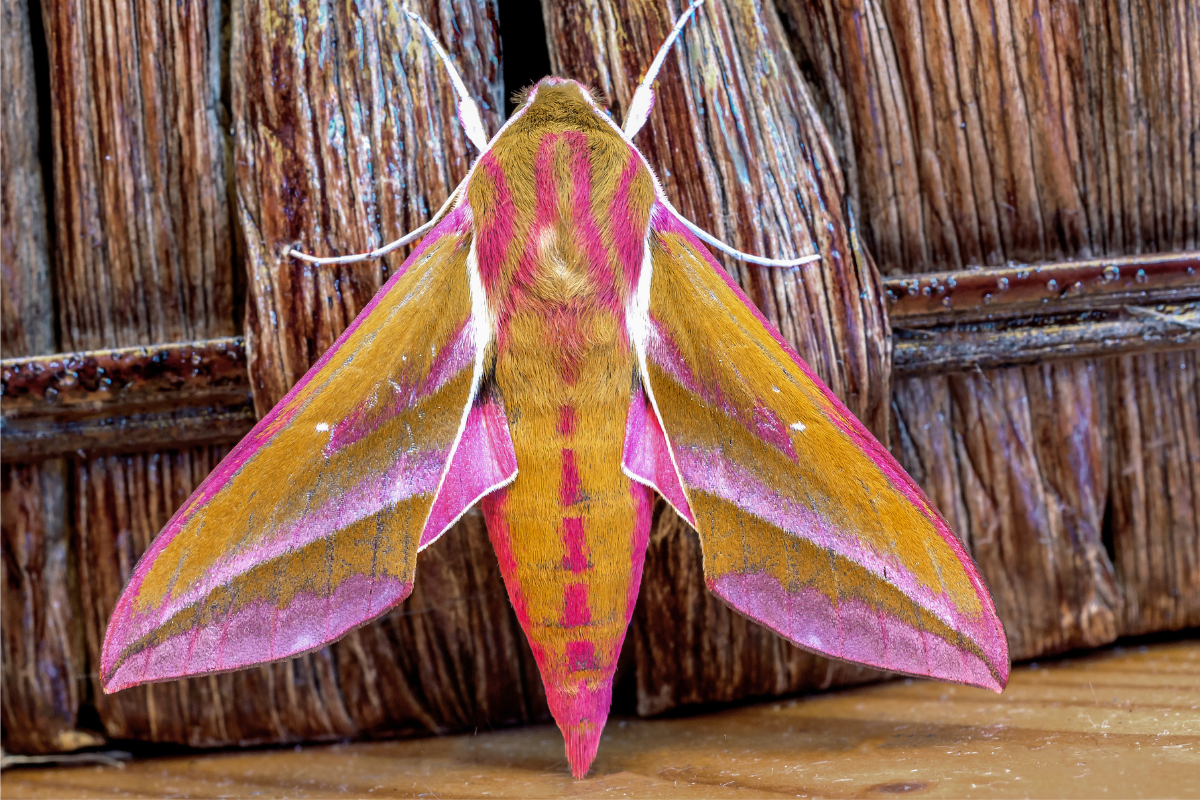
Another eye-catching sight of nocturnal wildlife is moths. You simply must shine a light in your back garden on a flat bright surface – so it gives them something to rest on – and you will see any of the 2,400 moth species that can be found in the UK.
The easiest way to discern whether a moth is nocturnal is their colouration; coloured moths are usually diurnal (daytime) moths, as they need to deter predators by doting more colourful appearances, as colour in nature usually indicates poison.
While colourful moths are diurnal, the duller, more drab coloured moths are nocturnal species – having proven that natural selection favours those that can disguise and camouflage well with their environment, especially when the stakes are high as a species who is under threat by other nocturnal aerial species, including the moth's famous predator, the bat.
Though an exception to the colouration rule, a beautiful moth to look out for is the elephant hawkmoth (Deilephila elpenor), which can be seen feeding on the nectar of honeysuckle and on other nectar-rich tubular flowering plants. The elephant hawk moth is famous for its beautiful pink and green colouration, and while they are night time moths, their colouration functions to attract mates and camouflage with their favourite leafage while they rest during the day.
Then there is the emperor moth, and this interesting species of moth differ in their active periods between genders; the female moth is more active at night, so is nocturnal, whilst the male is more active in the day, so is diurnal. This can be further explained by their sexual dimorphism in colouration – females are drabber and dimmer in colour, while males are more patterned and colourful, so describes a daytime moth.
They can be found in heathlands, moorland, bogs, and hedgerows, with the occasional sighting in gardens. To help spot any night time moths in your garden, have a look at the species’ favourite flowers that they feed on and try to spot them feeding, or grab a white sheet – or any light coloured blanket/sheet - and hang it up somewhere conspicuous – like a washing line or on the fence or wall – and shine a torch on its surface. The moths will be attracted to the light and will have a surface they can land on, so you will be able to see them better and a lot more clearly.
